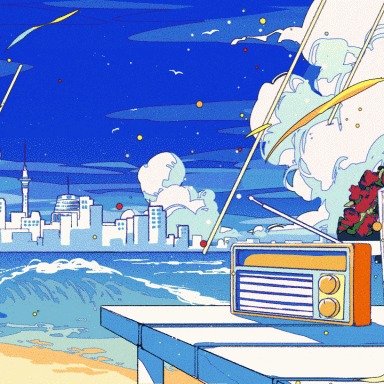How can I design a campaign encouraging consumers to participate in waste minimisation?
For the month of April we’ve put a special focus on projects and discussions around Design & Planet in alignment with our 2024 Autumn Conversations events. This article was written by one of our Ōtautahi Autumn Conversation Speakers, Welma Sykes.
Kia ora, hello and goeie dag. Two years ago, I embarked on a journey across the ocean to complete my Master’s in Creative Practice at ARA Te Pūkenga. During my application, I was asked what direction I would like to explore and after working in the field of design for over 10 years I knew I wanted to take advantage of this opportunity to not be driven by profit and challenge my own field that is rooted in capitalism. Instead my creative abilities could invite the environment to the conceptualising table and design something that could repair and benefit the biosphere.
Waste should be considered a design flaw. With this in mind the research began by looking at the end of the production line. One of my first sub questions asked, what waste solutions are already provided by the government, businesses, and New Zealand residents? According to Christchurch City Council, “managing and minimising waste is a key Council responsibility. All of us, … need to focus on what we are creating and using that is becoming waste” (n.d.). Aotearoa generates an estimated 17.49 million tonnes of waste per year, of which an estimated 70% is sent to landfills (New Zealand Ministry of Environment, 2021, para. 6).

The government encourages us to follow a waste hierarchy system, which reads in order Reduce, Reuse, Recycle, Recover, Dispose. However, my observations and research reveal that in the context of waste management, recycling is treated as a scapegoat where the visual and financial investment is mainly made at the recycling level. Instead, that investment should tackle the root cause of the waste problem, which is overconsumption. And that brings me to my main research question:
How can I design a campaign encouraging consumers to participate in waste minimisation?
This section summarises my practical research from February 2023. Please note that more of my creative progress can be found on my workbook link. Conceptualising the campaign, I simplified the underlying challenges to Medium, Message and Location.
Medium: recycled cardboard that, if transformed, doesn’t add to landfill.
Messages:
- To encourage engagement, I wanted to move away from heavy messages that fill users with hopelessness and guilt.
- Redesign old overused messages such as “reuse, reduce, recycle” to messages that focus on waste minimisation
Location: Collaborating with organisations that inspire to/or include environmental sustainability and waste minimisation as part their business model, and also have the manpower to launch it to their audience.

The backbone of my project is a website. www.wastefreechallenge.net uses data analytics in the background with different QR codes on the designs to measure effectiveness. It reveals how many users were driven to more than just view a design but to physically interact with them. Each campaign has a different QR code so I can see which approach appealed more to audiences. I opted for a dark background on the site because it reduces energy consumption and releases less carbon dioxide when accessed. The website’s home page also extends the messages to provide practical ways to reduce waste. I would love to have perfected this site but I didn’t invest a lot of time on its layout because I wanted to allow more time to focus on the campaign’s executions with the idea that if someone does adopt the campaign they can include it on their website with their own data-capturing set-up.
It’s been quite a journey over the last 2 years to my final deliverables and in the timeline summary it is the last three elements:

Which are a 1. Small Waste Free Flower, 2. Waste Free Challenge Diagram and 3. The large Waste Free flower.
The flowers have been designed with three simple messages to challenge consumers, designers and resellers. Simple, not easy, but simple: Design Waste Free, Buy Waste Free and Sell Waste Free.

- The Small Waste-Free Flower comes on a 250mm X 250mm cardboard square, provided in a pop-out puzzle so consumers can interact with a waste-free challenge by building the flower themselves. Simply fold and plant the waste free flower in a pot to spread the message. I limited the amount of glue by creating cutting and slotting solutions. Less mixed media means it’s easier to recycle.
- The Large Waste-Free flower is a scale version of the small Waste-free flower that is cut, build and curated for a specific space. It can either be placed as a group of 3/6 flowers or accompany the other Waste-Free Challenge designs to draw more attention.
- The Waste-Free Challenge Diagram is a consumer intervention that raises awareness and hopefully encourages consumers (basically people who buy things like yourself) to start thinking and consuming without adding to landfill. Inspired by a meeting with Dr. Alec McNeill (City Council’s waste manager) I designed a A3 and A2 flatpack easel to accompany the message. The idea is to showcase the diagrams in different libraries with each diagram having different QR code to see what areas do better than others.
Case Study:
After designing and sending a presentation to over 50 organisations (to see if anyone would be interested in showing my campaign on their premises), I received some great feedback and one of them was Willowbank Wildlife Reserve. Willowbank offered me a space to showcase my campaign for a week (Friday till Friday) in February. What excited me was how Willowbank incorporated waste-minimization methods and used their power to shift consumer habits. When I met with Shaun Horan, the engagement manager at Willowbank, he mentioned that although customers are initially hesitant, they accept the waste-minimisation changes. The brands they partner with for the gift shop are brands that share their environmental goal, and they don’t allow products to be overpackaged or come in plastic. The results for Willowbank was 22 engagements: Small flower: 8 | Large flower: 8 | Waste-Free Challenge Diagram: 6. More than the actual engagement is the retention rate, which was an average of 107seconds for that week.

The overall website with all the campaigns had 358 individual visits over the past year. More than the number of visits is the actual retention rate of consumers with an average page view time of 2m41s. The diagram has 76views with a retention rate of 01:24. The small flower has 53 views with a retention rate of 02:22. Recycle is not enough is the first poster I hand executed with 33 views – with a retention rate of 01:27.
Reflection:
Even though I captured quantitative data I soon realised the shortcoming of being an individual who attempts to take on the launch of a big campaign.
So I came to the conclusion that this campaign is a qualitative prototype aimed at organisations that have environmental sustainability and waste minimisation as part of their business model, such as Willowbank, and also have the manpower to launch it to their audience. Willowbank asked for the design to integrate the small flower template with their school programs. I can also offer it to schools and libraries around New Zealand that have their own laser cutter so they can carry the message forward. I made the design available online for anyone who can access a laser cutter in another way. The waste-free flowers big and small can be customised and be a way to spread the message in an interesting and waste-free way
Lastly: Do I identify as an eco-Marxist designer? This is a question with a lot of weight and quite honestly scares me a little because it gives little room to to fail. Similar to how I challenge consumers to strive for progress over perfection to minimise their waste, I do the same in my design. I strive to educate my client and to design with as little environmental impact, one project at a time.
My design foundation has definitely been shaken by the knowledge and perspective I have gained this past year. I am no longer impressed by complex designs, over the top aesthetics because I understands how it adds to the illusion of commodity fetishism assisting capitalism that harms the planet. Instead, I am inspired by simple, clever waste-free design solutions that acknowledge that nature is integrated with all aspects of living.
Bibliography:
Ministry for the environment. (2021, September). Estimates of waste generated in Aotearoa New Zealand. https://environment.govt.nz/facts-and-science/waste/estimates-of-waste-generated/#:~:text=It%20is%20estimated%20that%20in,tonnes%20are%20sent%20to%20landfill
Ministry for the environment. (2023, March 29). Government announces new era for New Zealand’s waste system. https://environment.govt.nz/news/government-announces-new-era-for-new-zealands-waste-system/
Ministry for the environment. (2022, November 27). Plastic Innovation Fund. https://environment.govt.nz/what-you-can-do/funding/plastics-innovation-fund/
Christchurch City Council. (n.d.). Other recycling schemes: rubbish, recycling and organics. Retrieved March 29, 2023, from https://ccc.govt.nz/services/rubbish-and-recycling/learning-resources/other-schemes
Christchurch City Council. (2023, January 25). Christchurch’s recycling facility benefits from $16.8m upgrade. Christchurch City Council Newsline. Retrieved March 29, 2023, from https://newsline.ccc.govt.nz/news/story/christchurchs-recycling-facility-benefits-from-16-8m-upgrade
About the Author

Welma Sykes is a creative and information designer who will complete her Master’s in Creative Practice at ARA in April 2024. Her field of study looks at how graphic designers can raise awareness of the environmental issues of overconsumption, as evidenced by the plastic pollution in the oceans and ever-growing landfills, to encourage consumers to participate in waste minimisation.
Originally from South Africa with a BA Information Design Degree from the University of Pretoria (2014) she has gained valuable experience by both owning her own small studio and working with large corporate brands to understand the influence graphic designers have to make an idea come to life. Now in her studies she has the opportunity to challenge her own field, rooted in commercial arts and redirect it towards benefitting the environment.




